In the process of writing her new memoir and art book, Art of Ruth E. Carter: Costuming Black History and the Afrofuture, from Do the Right Thing to Black Panther, the iconic Hollywood costume designer had an epiphany.
“I don't know if I like talking about myself that much,” says Carter.
As she began developing the book, writing bits and pieces in between production of Black Panther: Wakanda Forever, the weight and breadth of her decades-spanning career came into sharp, and at times tedious, focus.
“I didn't realize how they were gonna be,” she reflects. “It's kind of a stream-of-consciousness with a lot of the stories. I've told them all before, several times to people, and then the editor sent the story back and said, ‘Can you elaborate a little bit more on this part?’ Or, ‘Can we switch this part around?’ And you're like, ‘Wait, the story came back?’”
Despite the grueling process, the 152-page visual-deluxe book explores Carter’s three decades of work in film and television as a costume designer, accompanied by photos, sketches, mood boards, and film stills.
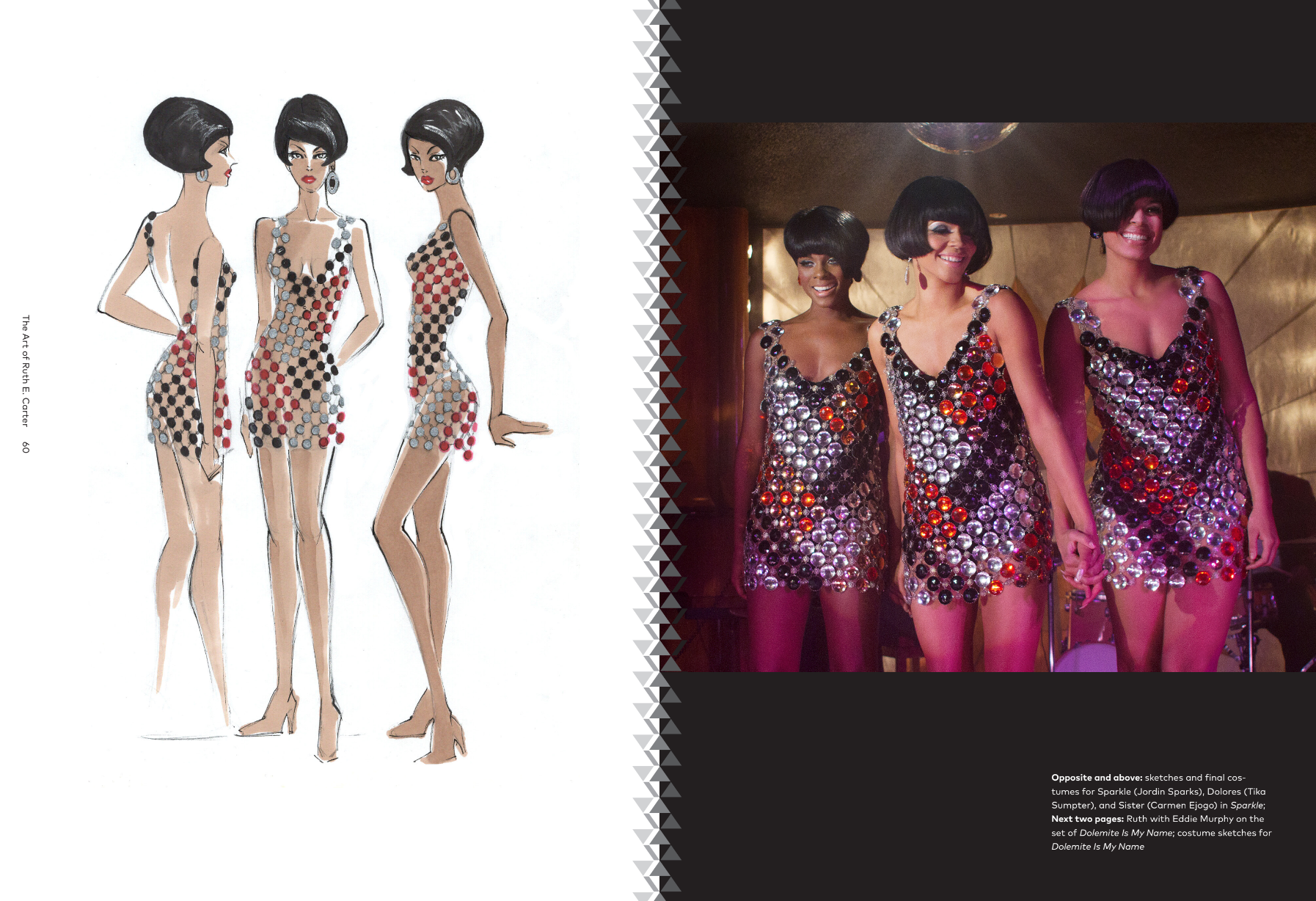
Costume sketches for the 2012 film “Sparkle” (left) and a still image from actresses Jordin Sparks, Tika Sumpter and Carmen Ejogo wearing Ruth E. Carter’s creations, featured on pages 60-61 of Carter’s book “Art of Ruth E. Carter.” Courtesy of Marilyn Lintel
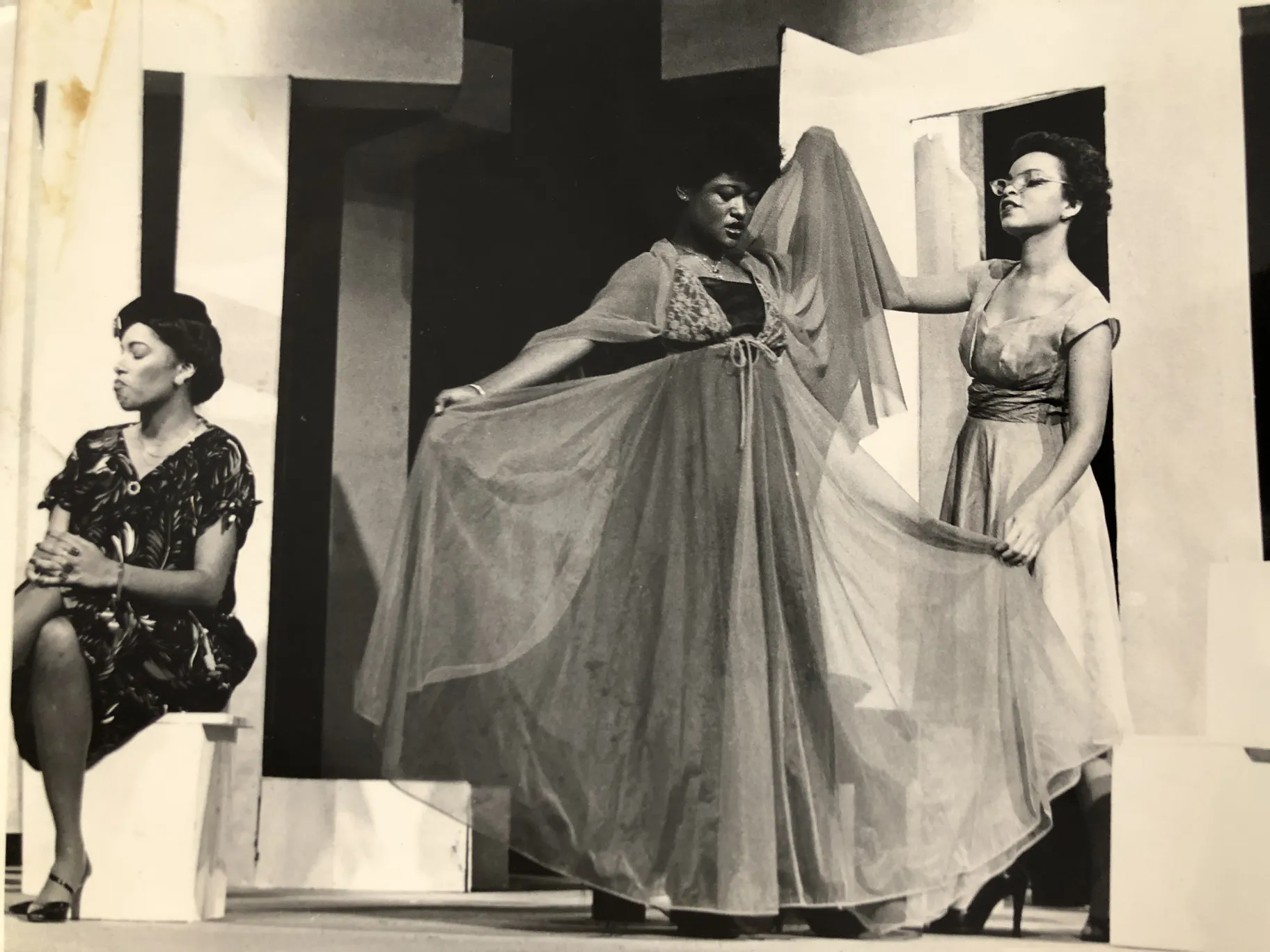
Ruth Carter (Right) interprets a character in Clare Boothe Luce’s play “The Women” at Hampton University in 1982. Courtesy of Marilyn Lintel
Costume designing was a ‘consolation prize’
Born the youngest of eight children to a single mother in Springfield, Mass., Carter’s first aspiration was to be an actor. But while pursuing a degree in Theatre Arts from Hampton University in Virginia, a fateful rejection from an acting audition ultimately set her on a lifelong career path.
“There weren't many parts, [and] I wanted one of them, so that part of it was disappointing,” she recalls. “But when [my theater professor] said, ‘We don't have anyone to do the costumes, and there's a costume shop that nobody's using on the second floor,’ I thought, ‘That does touch on a part of me that I have explored as a kid.’”
At age nine, Carter learned to read and design simple patterns while playing with her mother’s sewing machine, a skill she tapped into and further honed as she embarked on making costumes for Hampton’s theater productions.
“Maybe the reason I said ‘yes’ was because I found that I enjoyed that. So it was kind of [a] consolation prize,” she says.
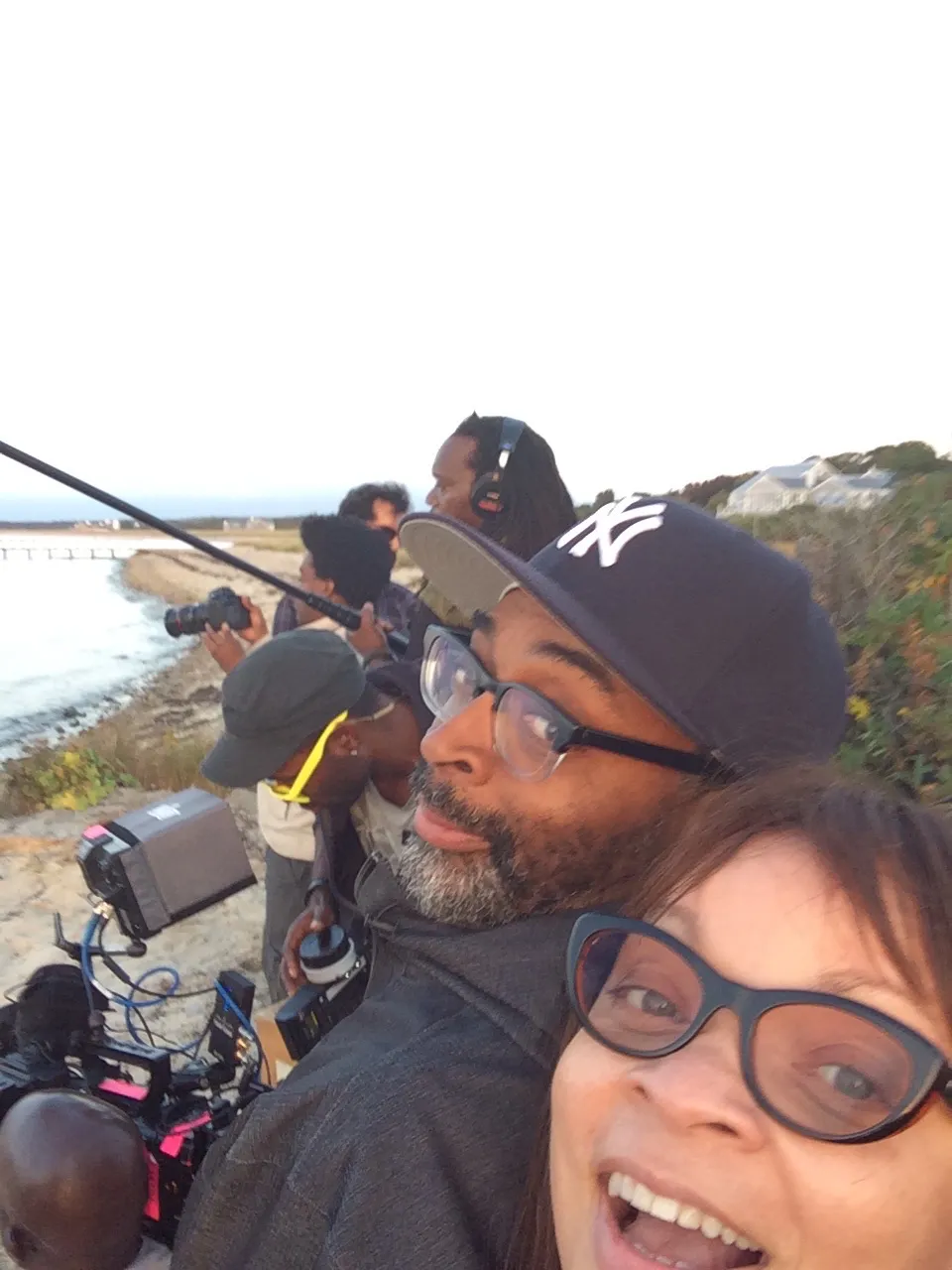
Ruth E. Carter takes a selfie with Spike Lee on a film set. Photo courtesy of Marilyn Lintel
A chance meeting with Spike Lee
After graduating from college, Carter interned for Springfiled’s City Stage and The Santa Fe Opera’s costume departments.
By the mid-80s, she had relocated to Los Angeles and was working as a dresser at the Los Angeles Theater Center, where renowned choreographer Otis Sallid was directing A Night for Dancing, a production featuring what Sallid has described as, “healing” works set to the songs of Stevie Wonder’s 1976 breakthrough album Songs in the Key of Life.
“I stayed after work to watch the performance and thought, ‘They could use a costume designer,’” she recalls. “So I approached Otis and asked him if I could design for the dance troupe. He said yes.”
Her collaboration with Sallid led to a chance meeting with director Spike Lee, who hired her as a costume designer for his second film, the 1988 comedy School Daze.
Things weren’t always smooth between them. Carter initially struggled to reconcile her laser focus and just-get-it-done ethos with Lee’s obsessive and, at times, overbearing work style.
“He was like an investigative reporter,” she says, recalling an incident when someone stole a pair of Nikes from wardrobe. “It’s kind of his personality to [ask], ‘Hey, hey, who was doing all that?’ in that [emphatic] way.”
Meanwhile, Carter was just worried about how to get through the film.
“I didn't think about people stealing anything. I thought about, ‘How am I going to get this project designed?’” she says.
Carter accepted that if she didn’t measure up to Lee’s expectations, he wouldn’t ask her back.
“I always took the position that he doesn't have to hire me again. At the end of the movie, I didn't want to ever feel like I was automatically going to be asked back,” she says. “I wanted to be the professional that could get other jobs with other directors too. And so I kept myself really at peace, in a sense, and when he did call, it was great. It was awesome, and a new beginning.”
That beginning evolved into a fruitful, decades-spanning collaboration that bore landmark films like Do the Right Thing, Mo’ Better Blues, Malcolm X and more.
“Malcom X” official trailer. Ruth E. Carter received her first Oscar nomination for Best Costume Design on Spike Lee’s 1992 bio drama. Courtesy of Rotten Tomatoes Classic Trailer via YouTube
Spielberg’s certainty
By the late ‘90s, Carter had worked on over a dozen films. That caught Steven Spielberg’s attention. He enlisted her to create the wardrobe for Amistad, his pre-Civil War set legal drama examining a complex case around slavery.
She quickly found that working with the legendary filmmaker kept her on her toes. Once while preparing for a scene, they visited a ship in Long Beach similar to the La Amistad portrayed in the film. There, Spielberg asked her about the wardrobe for Cinqué (Djimon Hounsou) on his journey back to Africa.
“I panic because I can't necessarily go back to the wardrobe truck on shore,” Carter recalls. “I had this postcard that was a depiction of a painting of the real Cinqué and he was wearing this draped white cloth across his chest. I ran to Steven and I showed him this painting on this postcard, and he just said, ‘Ah!’”
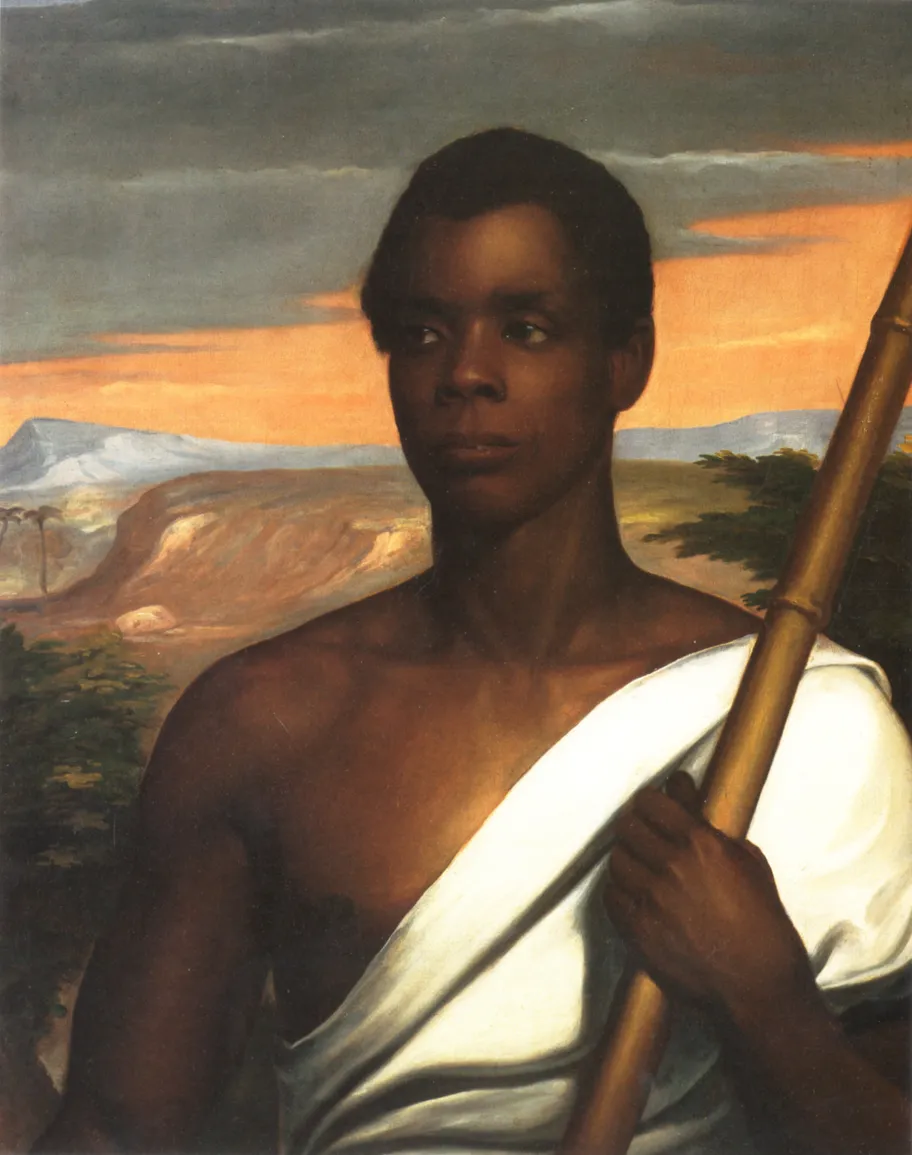
Portrait of Sengbe Pieh (Joseph Cinqué). Original held by the New Haven Colony Historical Society, New Haven, CT / Public Domain
Carter says Spilberg never second-guessed her work.
“I just feel like he's so sure,” she says. “We were shooting at an antique fort in Puerto Rico and I was dressing with my team hundreds of Africans in loincloths and stuff. And then we have these merchants and they were all on a balcony, buying the slaves. I ran to set [thinking] I could change something. Steven looked at me and said, ‘It's already shot.’”
Amistad received four Oscar nominations, including Carter’s second nod for costuming.
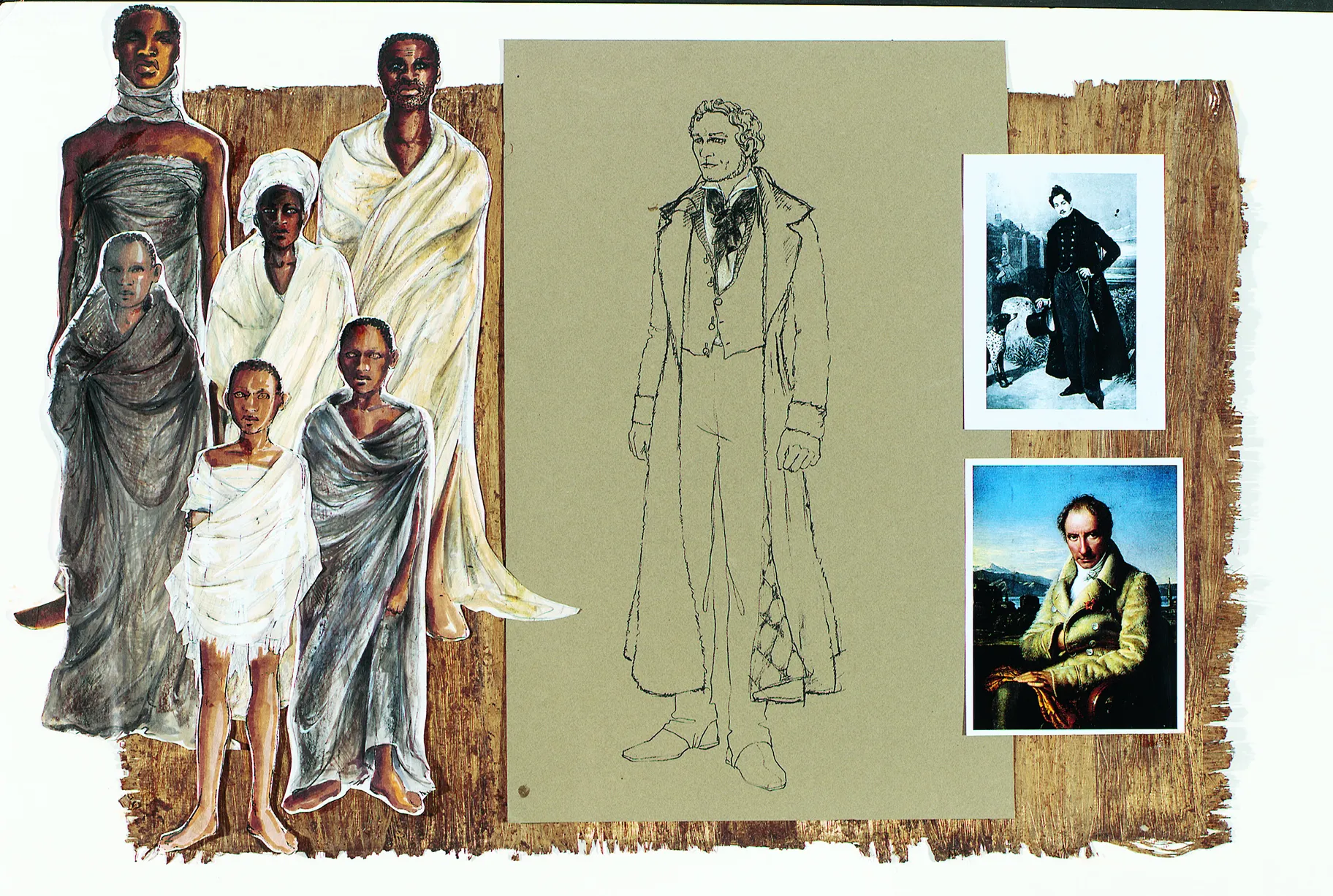
A mood board for Steven Spielberg’s 1997 bio-drama film “Amistad.” Courtesy of Marilyn Lintel
A refreshing start with Ryan Coogler
After creating the looks in numerous TV series’ such as a remake of the original miniseries Roots, and films like Selma and The Butler, Carter was asked to play a major role in bringing the world of Marvel’s Black Panther to the big screen.
Based on her experience, she thought that working for Marvel would present some challenges, so she came prepared.
“I guess once I walked into there, and I knew it was Marvel, I was expecting to put the boxing gloves on and go into it,” she says.
Instead, what she encountered was, in her words, “refreshing.”
“I was having trouble opening up the images I stored in Dropbox… so I panicked,” she recalls. “Ryan [Coogler] is sitting across from me just as calm as ever. He's watching me cycle through panicking over my laptop, trying to multitask, and answer questions. Then he said, ‘You know, I'm really glad you're here. I grew up watching your movies, and I remember going to see Malcolm X with my dad. It was a big family experience in the theater. I sat on my dad's lap, and I remember the costumes as a kid.’ And that really made me feel good. I felt really relaxed after that. … I felt like I had interviewed for the job back then,” she jokes
Eventually, executive producer Nate Moore pulled out his laptop, and she was able to share her images from his computer. Crisis averted.
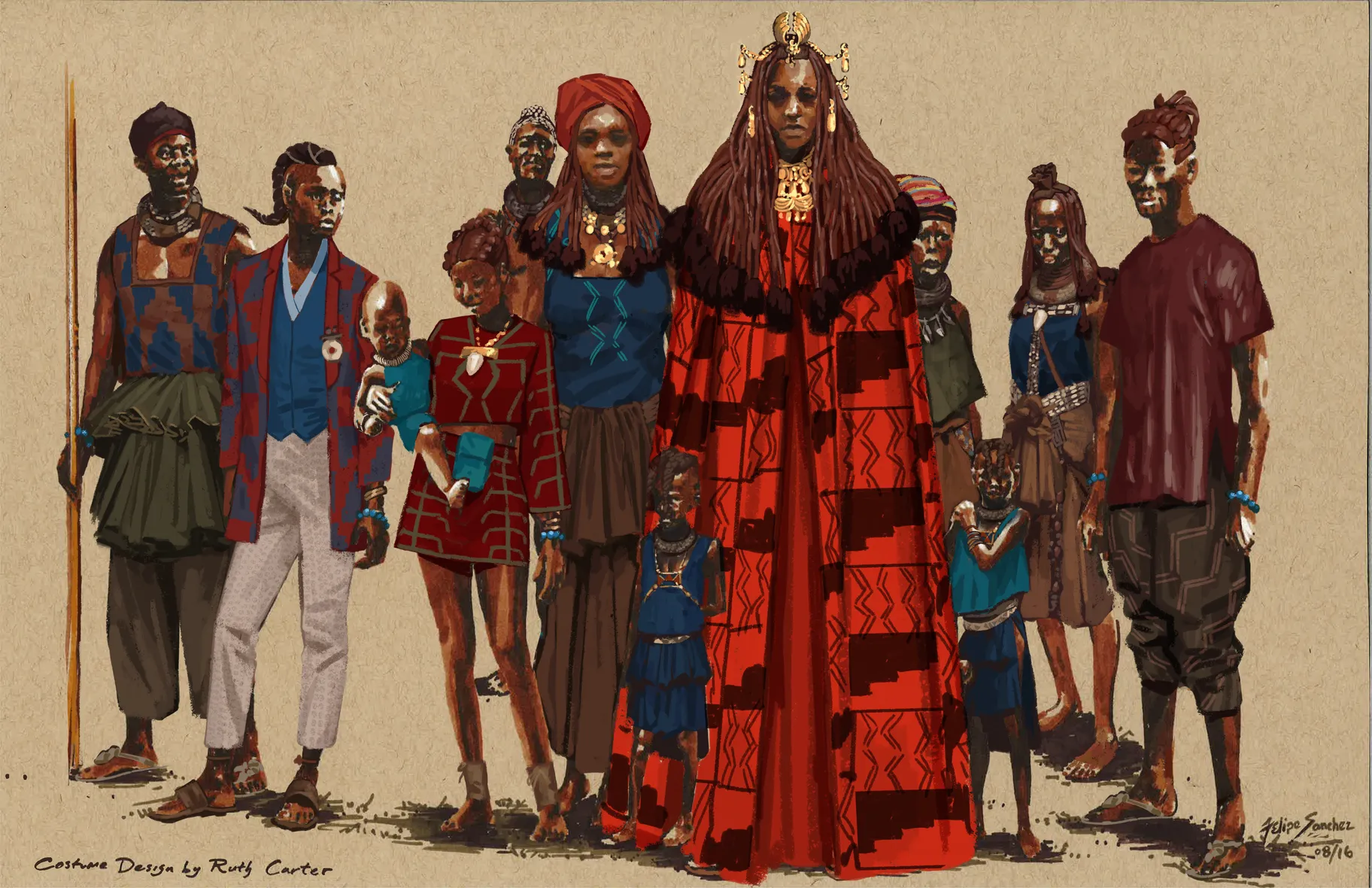
A sketch from “Black Panther.” Courtesy of Marvel Entertainment
Joys and challenges of designing Wakanda
Marvel had never done a movie of this scope before. In order to bring the Wakanda world to life, Carter and her team created 700 costumes. And to fulfill Coogler’s aesthetic vision for the film, all hands were on deck.
“The world is so big that we need everybody's input,” she explains. “Hundreds of illustrations are submitted, and we're all looking at them together. So it's a collaborative effort. The head of Marvel's on the same zoom as I am, and VFX, assistants and director. They are excited and they really want to see you come to light.”
While this was a team effort, Carter felt that she had the experience to take the challenge.
“I think that Marvel really wanted the input of a costume designer that could build a world,” she says. “So I just embraced that.”
More: Dressing Wakanda: Ruth E. Carter, fashion and black empowerment
She felt amazed by some of the costumes created, especially the iconic Panther suit for Chadwick Boseman.
“[Boseman] putting that costume on in my office during prep was majestic. It was incredible. He was stretching and moving, making his karate stances, and my mouth was on the floor. I just was like, ‘Wow! This is something these superhero suits, they really do transform,’” she recalls.
But then, she had a little panic attack when Boseman’s costume started malfunctioning, and the late actor spoke up.
“He said, ‘Yeah, but this helmet smashes my nose. I can't breathe and I can't really lift my arm above my elbow,’” she says. “So I was like, ‘Well, that's got to change.’”
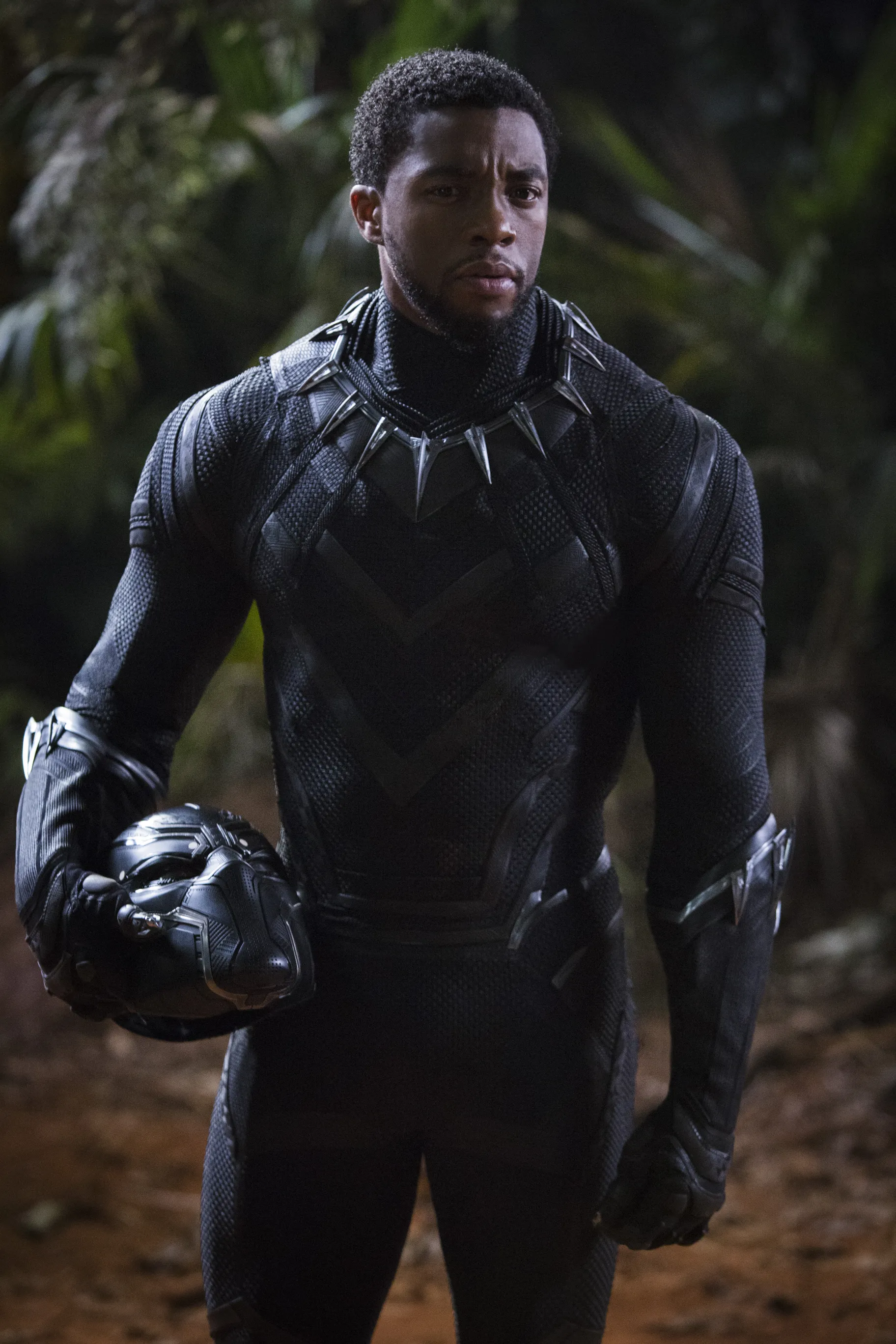
Chadwick Boseman wearing a Panther suit on the set of “Black Panther.” Photo courtesy of Disney/Marvel Entertainment
Black Panther’s impact
Carter became the first African-American to win an Oscar as a costume designer for Black Panther. Her afrofuturistic designs allowed her to build the film’s sequel, Black Panther: Wakanda Forever.
The franchise became an enormous box office success, with both movies grossing near $2 billion worldwide, and receiving innumerable awards, including four Oscars.
And the films’ impact on audiences was bigger and broader than just “understanding the importance of Black Panther to the Black community.” For Carter, they analyze Africa’s history and its rich tribal culture, all brought to life in the fictitious world of Wakanda.
“In this Afro, future world, if they were not colonized, , what would life in Africa be like?… So that became more of the story to build then actually the Black Panther,” she explains. “It also opened up an opportunity for me to explore it on a bigger scale and really take the concept and bring a bigger part of that concept to life.”
Behind the scenes: The New “Black Panther” suit for “Black Panther: Wakanda Forever.” Courtesy of Marvel Entertainment via Youtube
Always being prepared
The two-time Oscar winner says she is rarely on set for very long. Once the camera rolls on a costume, she is off to her office working on the next scene’s wardrobe. But even before that, she uses prep time to think about unforeseen events.
“What if this costume doesn't work? What else can we do? What other kinds of ideas should we develop to a point?,” she asks.
“So I'm always juggling that because once the camera is rolling, you don't have a lot of time to play around, or develop ideas. And sometimes the best ideas are the worst ideas, so you have to pivot. And that pivot time really does rely on how prepared you were in the case where that might happen.”
At the conclusion of her book, Carter explains how she has prepared and honed her skills:
“Throughout my career, people have always asked me, ‘Ruth, how did you become a costume designer? How do you come up with the ideas?’ Some people think it’s like magic. Well, yes, there’s some of that Black Girl Magic, but I am a costume designer and a thespian at heart. I consider myself a passionate student. I am a student of people. I am a student of storytelling and history telling. I am a student of design. I am a student of art. Studying my script, my craft and myself.” - Excerpt from Ruth E. Carter’s book, Art of Ruth E. Carter: Costuming Black History and the Afrofuture, from Do the Right Thing to Black Panther.
Carter’s book, Art of Ruth E. Carter: Costuming Black History and the Afrofuture, from Do the Right Thing to Black Panther, is now available.
